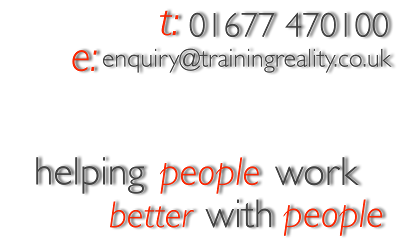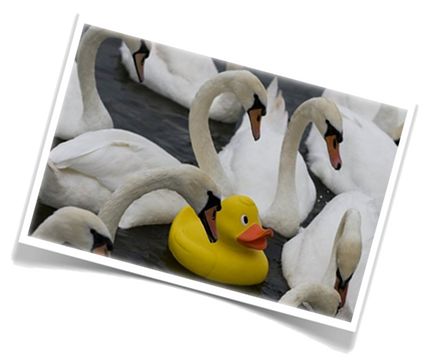Please press (at least!) one of these.
It costs you nothing, and (possibly) helps us spread the word!
...or being yourself
Friday, 12 March 2010
This is the final article in a series of three – but, like the final Harry Potter book, it will be divided in two!
The first article covered the issues and challenges raised when behaviour is driven by a desire to conform; the second covered the different (but overlapping) challenges when behaviour is driven by a desire to simply be different. Now it’s time to look for the sweet spot between these extremes.
The commonality between the extremes is that they are driven by a desire to be something that is driven by external factors; the behaviour of an individual is controlled by the behaviour of the majority – either to conform or rebel. In these cases, the individual concerned is not being themselves, but playing a role like an actor – the lines, the characterisation, the behaviour is being developed, designed and controlled by others.
The obvious solution to this is for teams, companies and organisations to create environments in which it is (more than) acceptable for people to be themselves – but this creates challenges. The other side of the coin is that individuals must make the commitment to be themselves – to be authentic – and again, this creates challenges.
Part One of this final instalment is going to look at the first of these – the challenge of balancing permission (and encouragement) for employee authenticity with the real, practical business needs of the organisation.
Organisational challenges
External versus internal behaviour
For most teams, organisations or companies, there are internal and external interactions that take place. For example, the stereotypical behaviour of a sales team at a internal two-day teambuilding course is likely (hopefully!) to be different to the behaviour of members of that team externally – in front of clients or customers. The question then arises: which behaviour is truly authentic for each individual?
Groups need to take a great deal of care from both the internal and external perspectives – just how strong are the expectations of certain styles of behaviour, and are we really aware of what or which style is natural and authentic for each individual?
Client or customer expectations
Developing the point above, another area that organisations feel they need to take into account is the (perceived) expectation of clients or customers. Would clients in your industry be comfortable with certain styles of dress, language and behaviour, or would it damage your business?
In addition to that question, there is also the question of just how accurate our perceptions of client or customer expectations are – are we realistic in our assessment, or are we as an organisation conforming to a norm that may not actually exist?
Brand image
Certain companies have very strong corporate brand images, and some of those are successfully communicated by their employees (equally, some companies have poor corporate images reflected by – or even created by – their staff, in certain high street stores for example). Virgin Atlantic cabin crew, the “geeks” in Apple stores, the waiters in Michelin 3* restaurants; their dress, behaviour and language is a critical part of their brand image.
So how can authenticity be allowed if a significant part of the communication of the brand image is delivered by employees? It’s another challenge…
--
I’d like to offer a few thoughts to chew on in this area – how organisations can manage this apparent conflict.
Recruitment
By recruiting people who “fit” in the first place, a lot of issues can be overcome. However, the big caveat with this approach is to avoid the dangers of conformity…what are you expecting people to fit in with?
Clear objectives, clearly communicated
Explain the “why”. The why can get to the very core of what is expected, and as long as the core is protected, there can be flexibility around the edges.
Challenging preconceptions
As an organisation, particularly the leader of an organisation, challenge your preconceptions about what is traditional, preferred or expected behaviour.
Being authentic as a whole
Finally, as an organisation, be authentic yourself. Don’t project an image that is not really “you”. Don’t pretend to be something you’re not. Your clients and customers will spot it, and your employees will be confused.
--
Part Two of this article will cover the challenge of authenticity for individual employees.
Please press (at least!) one of these.
It costs you nothing, and (possibly) helps us spread the word!





